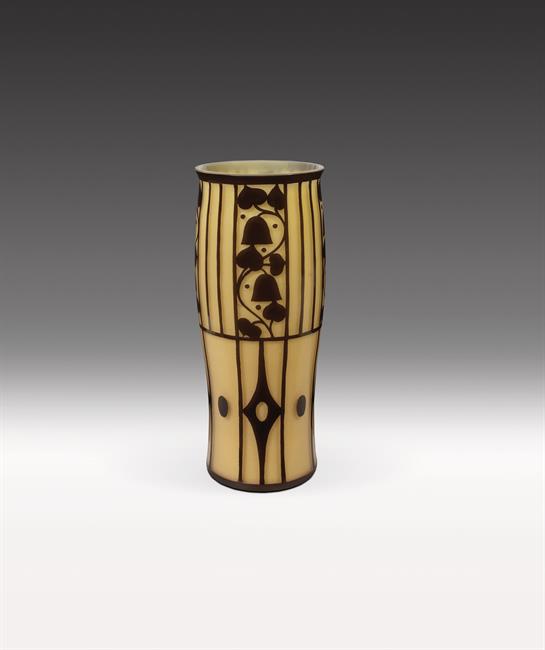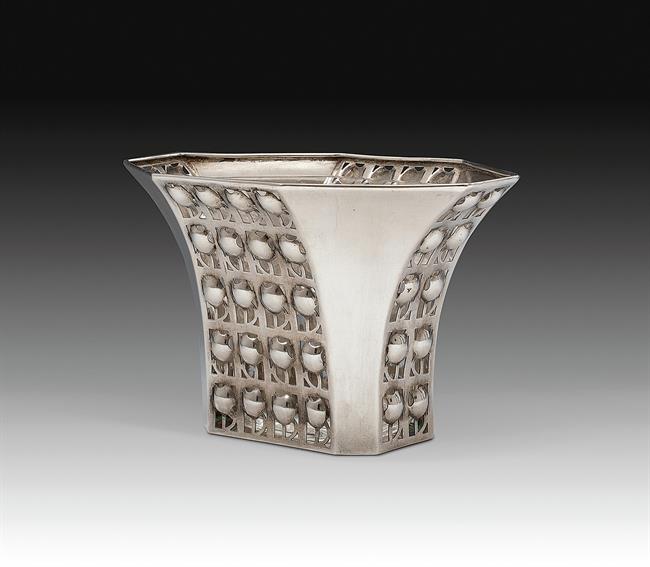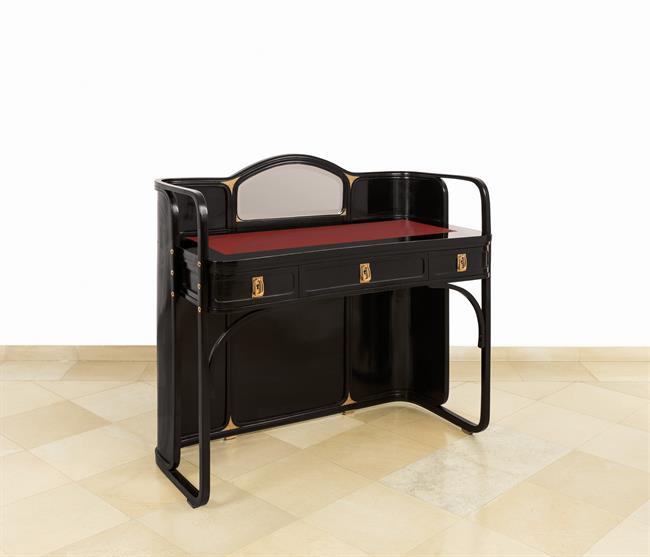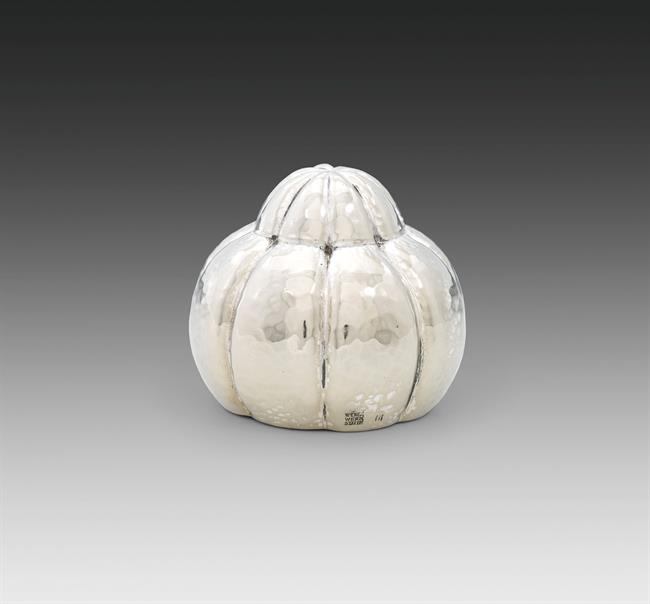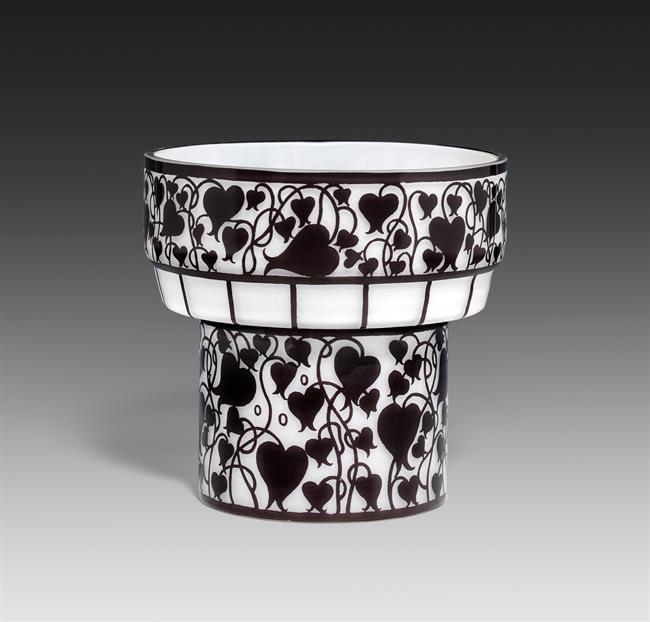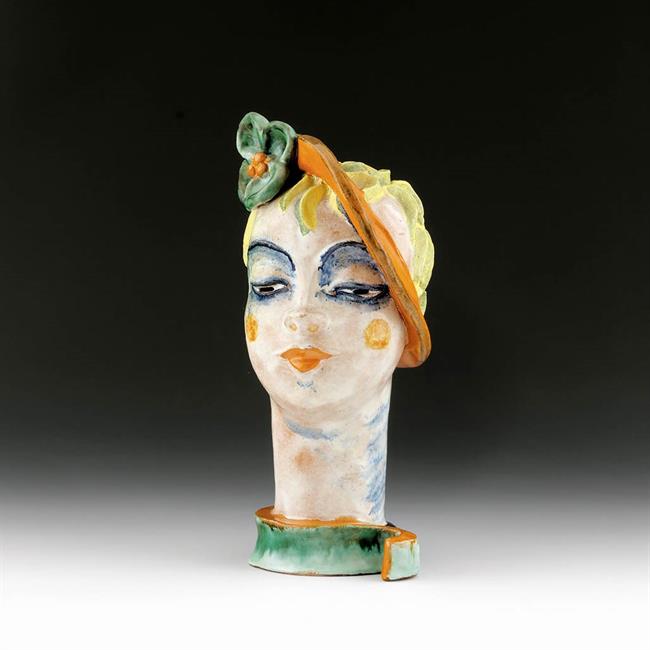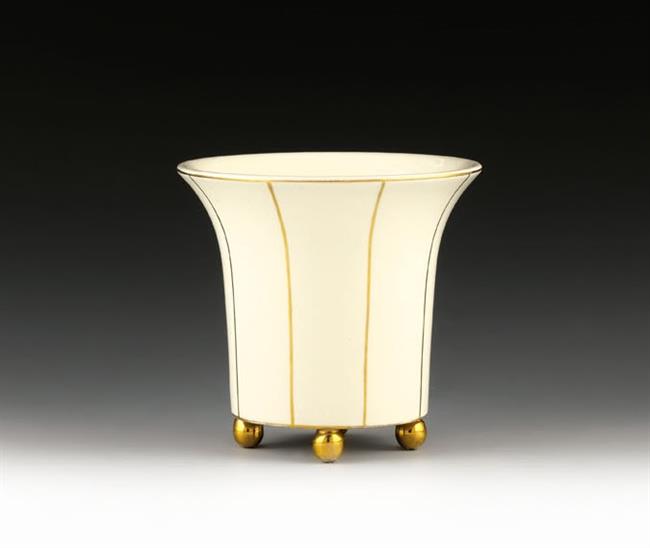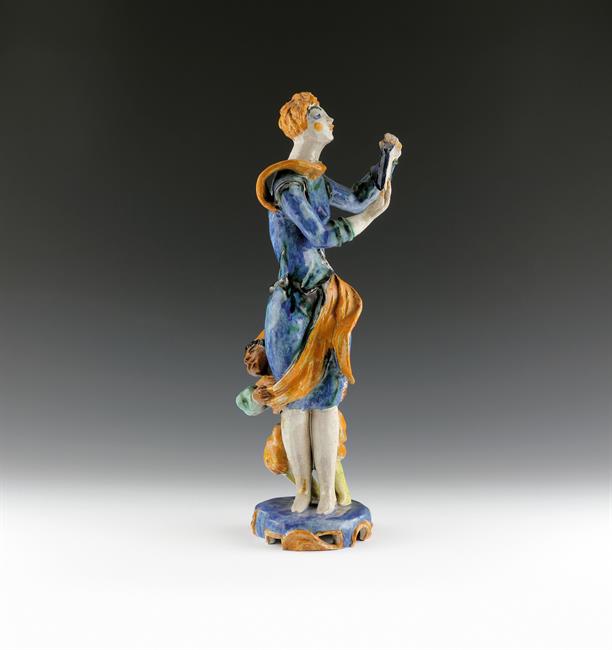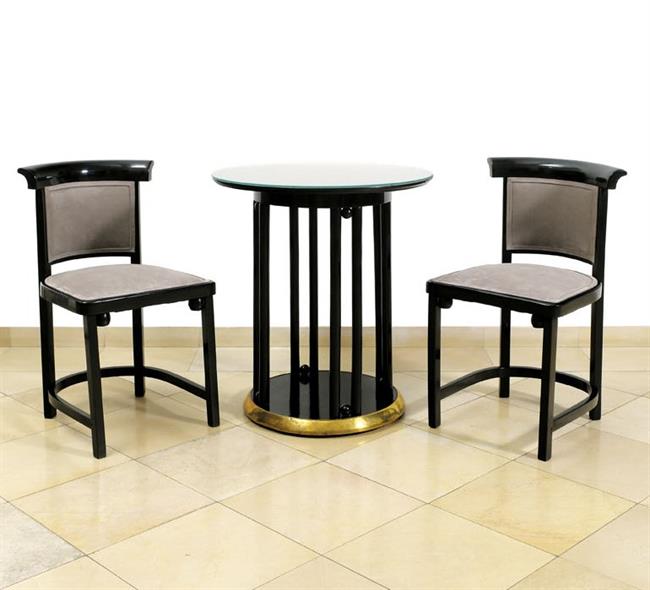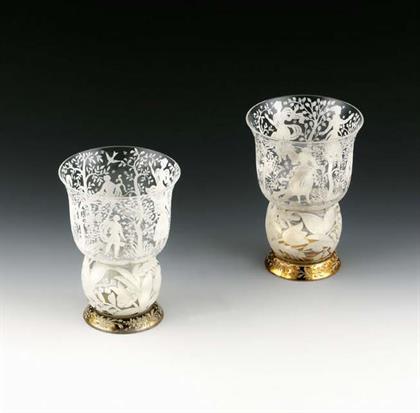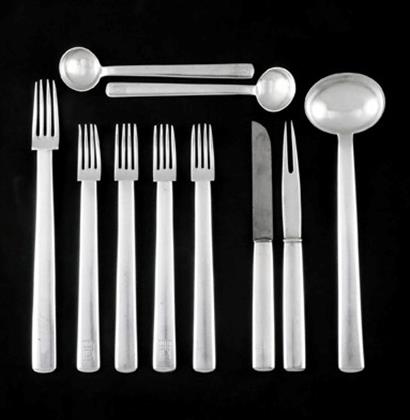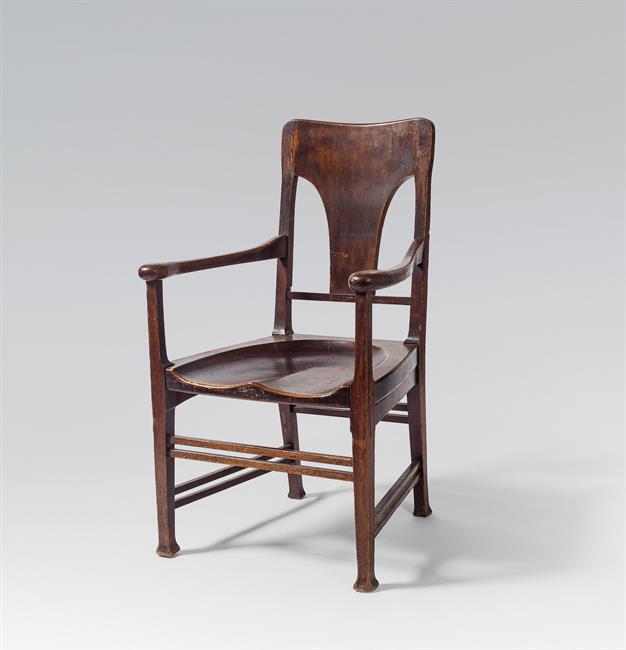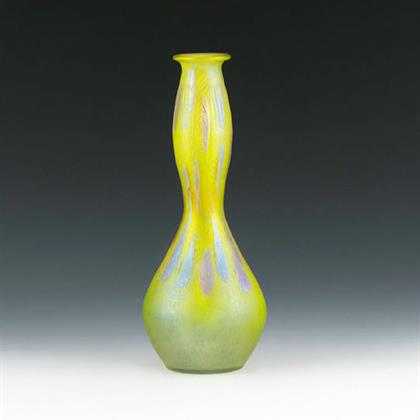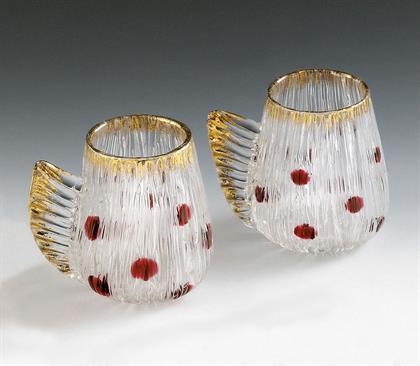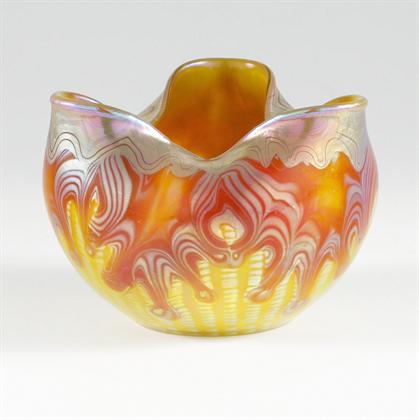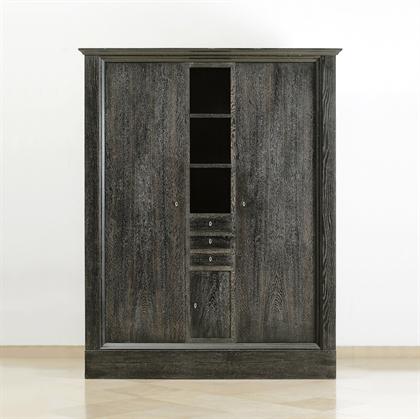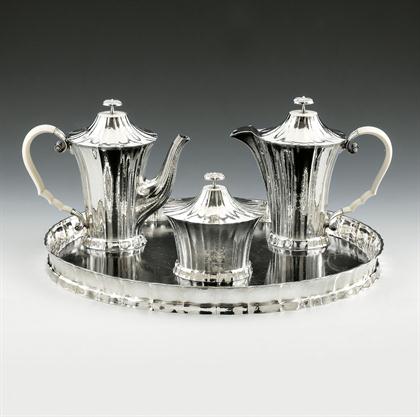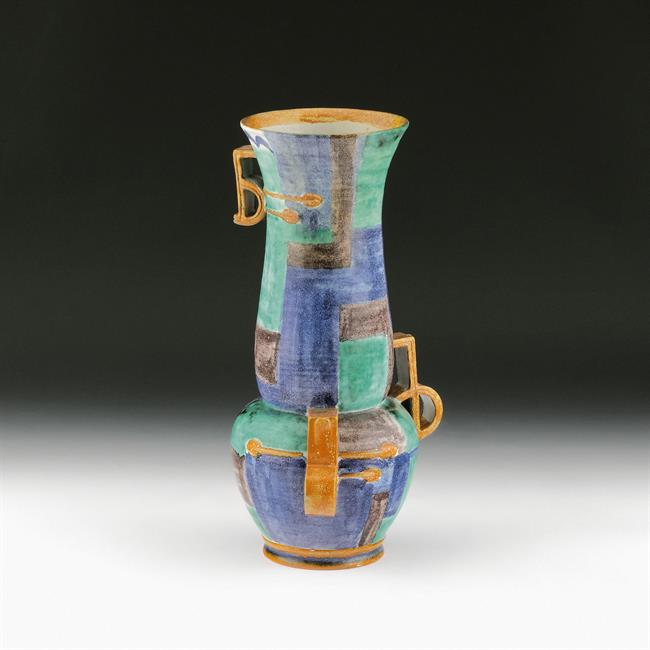Design made in Austria – applied arts of the early 20th century
Fine art is one cornerstone of the Galerie bei der Albertina ▪ Zetter in 1010 Vienna. The other, equally important one, is the captivating discipline of applied arts which was paramount to Viennese Art Nouveau. The emerging spirit in Vienna around 1900 caught Austria’s artists like a creative fever and for many initiated a frenzy of innovation and productivity.
Design of the 20th century
The transition from the 19th to the 20th century heralded a new era not only in calendrical but also in artistic terms. Historism, the wide-spread and accepted paradigm, was perceived by many young and ambitious artists as passé, too bulky and cumbersome to allow for new vistas. Hence, they gradually freed themselves from the shackles of a dogmatic academy in order to develop new ideas and forms. When these entered the artworld they caused an uproar and would influence architecture, interior and graphic design as well as applied arts in general forever. The soulless functionality and artificiality of most articles of daily use which were flooding society thanks to heavy industrialization simply had to give way to a more dynamic and natural symbolism. In this regard, an interesting feature of Austria were the often strictly geometric forms on the one hand and art nouveau’s luscious, floral patterns on the other.
Applied arts or design in the 20th century experienced the first crucial shift through the emergence of the so-called Jugendstil. Initially starting with the British Arts & Crafts movement, the idea of manufacturing aesthetic objects of everyday use as opposed to machine-produced function-only goods spread through the whole of Europe: In Germany it was known as Jugendstil, in Britain and France as Art Nouveau, and in the United States as Modern Style. In Austria Jugendstil and Secession-style are often used synonymously. Applied arts made in Austria, and more specifically in Vienna, influenced all areas of life.
Visit us in the Galerie bei der Albertina ▪ Zetter in the heart of Vienna and experience the richness of 20th century design in all its facets! We buy and sell furniture, glassware, silver, ceramics, cutlery, jewellery and much more that mirrors the zeitgeist of Viennese Jugendstil and which have long become timeless classics.
The idea of transporting beauty and aesthetics in all areas of life is closely related to the concept of the Gesamtkunstwerk – a total work of art. Coined originally by composer Richard Wagner, the idea stands for works of art that harmonically combine various arts or rather bring them together out of aesthetic necessity. As Aristotle famously said, the whole is greater than the sum of its parts. Probably one of the most impressive examples of such a Gesamtkunstwerk is the Palais Stoclet in Brussels. From the exterior of the house and the garden to the smallest details of interior design, from lighting to cutlery, everything matches, resulting in an all-immersing artwork. In Vienna too, some buildings and apartments were conceived in a similar fashion, constituting a harmonious and consistent whole. This combination of life and art was one of the Viennese Jugendstil’s main concerns and proponents of the movement dreamt of life as one great Gesamtkunstwerk by connecting the beautiful with the useful.
Wiener Werkstätte Design
Especially the so-called Wiener Werkstätte – the Viennese Workshop – still fascinates design aficionados the world over. Founded in 1903 by artists Josef Hoffmann and Koloman Moser and industrialist Fritz Waerndorfer the collective quickly attracted some of the most innovative and creative minds in the Austro-Hungarian empire sharing the common aim of redefining the terms of art and to elevate the applied arts to new heights. In close cooperation with the Vienna school for applied arts (today the university for applied arts) and artists affiliated with the Secession the Wiener Werkstätte produced furniture, jewellery, prints and objects of everyday use on an aesthetic scale never seen before.
Nothing is as unstoppable as the right idea at the right time and so the Wiener Werkstätte quickly gained international acclaim with shops soon opening in Zurich, Berlin and New York. Only the economic crisis of 1929 and the consequent impoverishment of the bourgeoisie led to its demise – at least concerning the sales figures. Design made in Austria had already left an inerasable mark on history, being so timelessly beautiful that it still influences 21st century design and is collected by enthusiasts all over the world.
The Galerie bei der Albertina ▪ Zetter presents Austrian design in all its wealth
The Galerie bei der Albertina ▪ Zetter offers extravagant art nouveau furniture and basic commodities that have written design history. We sell rare pieces of furniture not only by the founders of the Wiener Werkstätte Hoffmann and Moser but also by other famous artists/ designers such as Otto Prutscher, Marcel Kammerer, Josef Urban, Adolf Loos or Dagobert Peche. Furthermore, we offer silverware and rare glass and ceramic objects that were manufactured by the Wiener Werkstätte and designed by artists such as Gudrun Baudisch, Vally Wieselthier, Michael Powolny, Eduard Klablena, Bertold Löffler or Susi Singer.
Thereby linking up fine art with design of the 20th century we cherish and promote the fruitful connection of painting, sculpture and applied arts. For any questions concerning Viennese art nouveau, furniture, ceramics or Austrian design in general please call us (+43-1-513 14 16) or write us an email (zetter@galerie-albertina.at). Of course you are welcome to visit us directly in the gallery in the heart of Vienna! We are happy to answer any inquiries!
-
Vally Wieselthier
Mirror with Masks 1928Josef Hoffmann
Pair of Eight-armed Candelabras design before 1924Franz Hofstötter zugeschrieben
Vase 1899Josef Hoffmann zugeschrieben
Glass Cabinet around 1905Josef Hoffmann
Unique Samovar Design before 1906 for Magda Mautner MarkhofJosef Hoffmann
Vase 1912Josef Hoffmann
Jardiniere design 1909Koloman Moser
Eight Armchairs and Table design 1901Dagobert Peche
Centrepiece around 1920Dagobert Peche
Lamp 1921Koloman Moser
Desk design 1902Johann Lötz Witwe, Klostermühle
Vase 1902Johann Lötz Witwe, Klostermühle
Vase 1902Josef Hoffmann
Rare Vase design 1921Josef Hoffmann
Bottle Stopper design around 1920Vally Wieselthier
Female Head with Orange Flower 1928Otto Prutscher
Goblet around 1909Otto Prutscher
Three Goblets around 1907Erna Kopriva
Jardinière 1927Hans Bolek
Rare large Vase 1915Joseph Maria, zugeschrieben Olbrich
Table with Four Chairs Design around 1900Joseph Maria, zugeschrieben Olbrich
Cabinet design around 1900Bertold Löffler
Lidded Box "Putto with Wreaths" manufactured until 1912Johann Lötz Witwe, Klostermühle
Vase around 1900Zsolnay, Pécs
Vase 1900Eduard Klablena
Fashionable Lady 1913-14Eduard Klablena
Fashionable Lady with Parcels 1912-16Jacob & Josef Kohn, Wien
Dining Table around 1905Michael Powolny
Fan Lady Box design around 1910, manufactured 1912-19Joseph Maria, zugeschrieben Olbrich
Sideboard design around 1905Eduard Klablena
Vase with MasksKoloman Moser
Desk, design 1902 and Armchair, design 1901Erna Kopriva
Carriers of Bowls around 1927Koloman Moser
Two Armchairs design 1901Johann Lötz Witwe, Klostermühle
Vase around 1900Johann Lötz Witwe, Klostermühle
Bowl around 1936Koloman Moser
Ladies´Gift "Viennese Ball , 9th February 1901" 1901Johann Lötz Witwe, Klostermühle
Vase 1902Josef Hoffmann
Table Dustpan design 1916, manufactured from 1922Vally Wieselthier
Girl`s Head with Pageboy 1928 -
Vally Wieselthier
Girl´s Head with Blue Outlined Eyes 1928Marie Kirschner
Henkelvase um 1905Società Anonima "Antonio Volpe"
“Egg“ Rocking Chair around 1914Koloman Moser
Six Fauteuils design 1901Vally Wieselthier
Female Head with Green Flower 1928Koloman Moser
Fauteuil design around 1901Koloman Moser
Desk design 1901Josef Hoffmann
Brooch with Flower Décor design before 1909Franz Hofstötter
Vase around 1900Dagobert Peche
Pendant design before 1914Susi Singer
Woman with Birds 1920Susi Singer
Man with Dogs 1920Eduard Klablena
Fashionable Lady around 1913Josef Hoffmann
Flower Basket design before 1910Michael Powolny
Vase on Four Ball Feet design around 1910, manufactured from 1919Vally Wieselthier
Centrepiece with Bird design around 1926Marcel Kammerer
Table design around 1903Dagobert Peche
Small Lidded Jar design around 1912, manufactured 1912-19Jutta Sika
Seventeen-Piece Tea Set with Cake Plates around 1901Vally Wieselthier
Woman with Book and Child 1927Dagobert Peche
Jardinière around 1912/13Susi Singer
Female Bust with Flower Veil 1927Art Deco
Pearl Pouch 1920iesEduard Klablena
Crow 1912-17Johann Lötz Witwe, Klostermühle
Bowl around 1936Jacob & Josef Kohn, Wien
Two Chairs and a table around 1905Erna Kopriva
Jardiniere 1927Erna Kopriva
Vase 1929Oswald Haerdtl
Three-armed Candelabra after 1922Gudrun Baudisch
Female Head 1928Gudrun Baudisch
Female Head 1928Franz Hofstötter zugeschrieben
Inkpot 1901Johann Lötz Witwe, Klostermühle
Vase form around 1906, décor around 1909Hans Ofner
Two Doors and Two Pairs of Original Door Handles from Villa Schießl around 1911
Serving Trolley around 1902Josef Hoffmann
Four Pairs of Door Handles design around 1905Dagobert Peche
Lidded Jar design before 1912, manufactured after 1919Jacob & Josef Kohn, Wien
Two ChairsEduard Klablena
Bowl with Masks around 1925 -
Josef Hoffmann
Medallion with Malachite and Original Chain around 1918Dagobert Peche
Lidded Jar design around 1912, manufactured after 1919Johann Lötz Witwe, Klostermühle
Vase around 1903Michael Powolny
Vase manufactured until 1912Josef Hoffmann
Cigarette Box around 1921Reni Schaschl
Two Glasses 1916-21Dagobert Peche
Lidded Jar design before 1912, manufactured 1912-19Josef Hoffmann
Vase 1922Josef Hoffmann
10-part Cutlery "Rundes Modell" design around 1906Leopold Bauer
Two Chairs 1904Otto Prutscher
Small Table with Bar Cabinet and Mirrored Table Top 1922Dagobert Peche
Vase design around 1906, manufactured 1912-19Carl Otto Czeschka
Brooch 1906
ArmchairJugendstil
ArmchairJacob & Josef Kohn, Wien
Six ChairsJosef Hoffmann zugeschrieben
Six Chairs design around 1901Eduard Klablena
Vase around 1912Vally Wieselthier
Vase 1922-28Jugendstil
Five-piece Travel Tea SetJohann Lötz Witwe, Klostermühle
Vase around 1900Johann Lötz Witwe, Klostermühle
Vase around 1903Josef Hoffmann
Crayfish fork and dessert knife "Round Model" design around 1906Josef Hoffmann
Four-Piece Smoking Set around 1922Johann Lötz Witwe, Klostermühle
Vase around 1908Fachschule Steinschönau
Bowl around 1915Josef Hoffmann zugeschrieben
Two Glass Cabinets around 1905Otto Prutscher zugeschrieben
Six ChairsJosef Hoffmann
Brooch 1912Josef Hoffmann
Bread Basket 1911Marcel Kammerer
Two Armchairs design 1910Otto Wagner zugeschrieben
Eighteen Liqueur Glasses 1910Josef Hoffmann
Vase design 1915-19, manufactured before 1922Franz Hofstötter
Vase around 1900Josef Hoffmann
Vase design around 1914, manufactured around 1925Gmundner Keramik
Vase after 1919Gmundner Keramik
Box with Lid after 1919Hans Bolek
Pendant 1916Josef Hoffmann
Beer Glass with Floral Décor 1918-19 -
Johann Lötz Witwe, Klostermühle
Two GlassesDagobert Peche zugeschrieben
Large Vase around 1919-20Kiki Kogelnik
Paperweight "New York Head" 1997Kiki Kogelnik
Paperweight "Bubble III Blue" 1997Kiki Kogelnik
Paperweight "Prototyp IV" 1997Vally Wieselthier
Mirror 1928Johann Lötz Witwe, Klostermühle
Vase 1901Josef Hoffmann
Ashtray design around 1920Franz Hofstötter
Rare Vase around 1900Johann Lötz Witwe, Klostermühle
Vase around 1900Johann Lötz Witwe, Klostermühle
VaseKoloman Moser
Vase design 1902Vally Wieselthier
Large Centrepiece around 1924Josef Hoffmann
Basket with Handle design around 1924Josef Hoffmann
Small Cheval Mirror around 1940Ludwig Moser & Söhne, Karlsbad
VaseJosef Hoffmann
Cupboard from the apartment of Magda Mautner-Markhof around 1903Johann Lötz Witwe, Klostermühle
Lamp ShadeVally Wieselthier
Two Lampstands 1927Vally Wieselthier
Fish Lampstand 1928Vally Wieselthier
Lampstand 1927Vally Wieselthier
Pair of Lampstands 1928-29Susi Singer
Female Nude with Cat 1923-25Pavel Janák
Three Coffee Cups and Two Sugar Bowls 1920Otto Prutscher
Table and Four Chairs 1914Oswald Oberhuber
Cupboard 1987Koloman Moser
Wine glass toned yellow 1899Karl Mottl
Jewellery box around 1930Josef Hoffmann zugeschrieben
Cupboard around 1910Josef Hoffmann
Four-Piece Coffee Set design 1918Josef Hoffmann
One Coffee Cup with Saucer Design around 1910 (shape) and 1919 (decor)Johann Lötz Witwe, Klostermühle
Vase around 1902Johann Lötz Witwe, Klostermühle
Vase around 1902Johann Lötz Witwe, Klostermühle
Vase around 1904Johann Lötz Witwe, Klostermühle
Vase around 1900Gudrun Baudisch
Vase 1927Grete Neuwalder
Fabulous Creatures with BowlsEttore Sottsass
Table Cream 1984Ettore Sottsass
Vase "Clesitera" 1986






